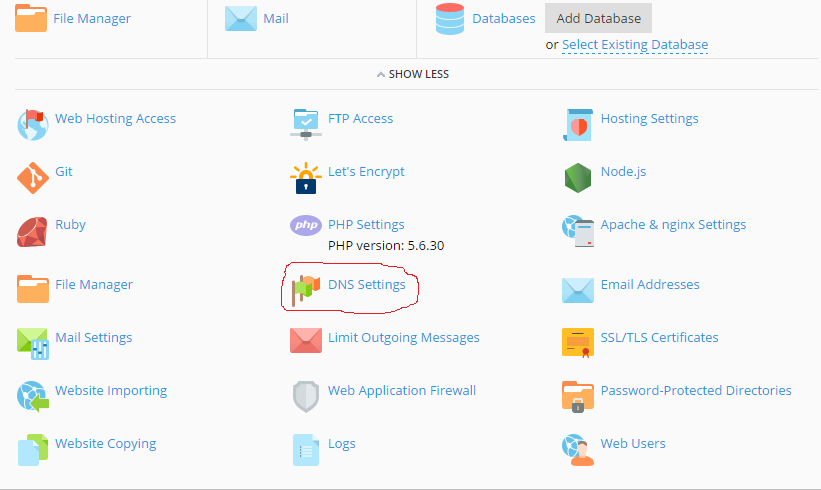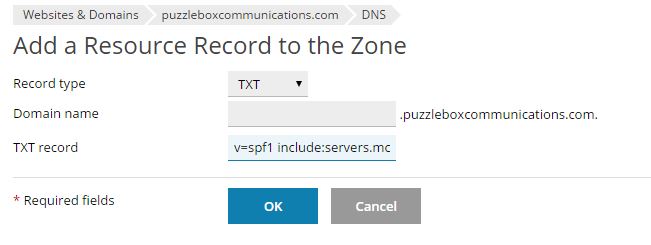
Ever felt the frustration of pouring creativity into your Mailchimp emails, only to find them tucked away in the ominous spam folder?
Despite Mailchimp having an impressive customer base of 679,096, even their emails can occasionally take an unexpected detour to the realm of spam. The burning query persists: ‘Why is my Mailchimp email going to spam?’
No need to worry, as we’ve got you covered! Today, we embark on a journey to demystify this phenomenon and explore effective solutions to fix and prevent it, ensuring that your email marketing endeavors remain on the right path. Rest assured, your email marketing aspirations need not be lost in the spam abyss.
In our pursuit of top-notch email deliverability, we highlight five significant reasons why your Mailchimp emails might end up in spam. Additionally, we reveal five actionable steps and one ultimate solution, assuring not just delivery but a spotlight in the coveted primary inbox!
It’s time to streamline your email marketing efforts for optimal deliverability. Let’s dive in!
MailChimp Email Deliverability Report

Analyzing recent email performance through MailChimp, it’s evident that 75.59% of the 358,818 emails dispatched successfully found their way into recipients’ primary mailboxes. However, a notable 20.81% of emails experienced a redirection to spam folders post-delivery. While this figure underscores a need for further scrutiny, it also presents an opportunity to refine our strategies for maintaining inbox placement.
Here’s the lowdown: if your email decides to take a detour to the spam folder, it joins the cool 20.81% gang. We’ve got our eyes on that exclusive crew, and we’re on a mission to upgrade our email deliverability.
Picture this: behind the scenes, we’re like email detectives, continuously investigating and enhancing our delivery game. This guide is our secret sauce, guiding us to strengthen communication channels and make sure our outreach game is top-notch.
Why Is My Mailchimp Email Going to Spam?
Here are the main reasons why is my mailchimp emails going to spam:
1. Your SPF/DKIM settings are not properly set-up.

You need to set up SPF and DKIM records – they’re like golden keys for your emails.
SPF is the bouncer, deciding which addresses can send emails for your crew. DKIM is the secret handshake, making sure your emails are legit. Now, DMARC? It’s like the VIP security detail, making sure SPF and DKIM are working together seamlessly.
Setting up all three is like telling Mailchimp, “Hey, they’re with me!” If you skip this step, your emails might miss the inbox party and end up in spam.
In essence, mastering authentication protocols ensures that your emails steer clear of the spam folder, maintaining a trustworthy and secure communication channel.
Note: There is a possibility you’ll encounter errors such as 554 5.7.5 permanent error evaluating DMARC policy, refer to our guide for assistance—it can be beneficial.
2. Email Content that Trigger Spam Filters
- Different factors, such as email content, can activate spam filters and lead legitimate emails to end up in the recipient’s spam folder. Here are some common spam trigger words:

- Use a tool that check email for spam triggers.
- Also avoid spam triggers like CAPITAL LETTERS, excessive exclamation marks!!!, emojis ❤✨🔥👍🥺, and unusual fonts and font colors in your emails.
3. Low Email Marketing Engagement

- Email marketing engagement gauges recipient interaction with your emails. Did they open it? How many read the content, clicked on links, or followed your call to action? If a significant number don’t open your Mailchimp emails, ESPs might send them to spam, indicating a lack of perceived value.
- Discover tips in our guide on the best time to send cold emails to enhance open rates, tailored especially for individuals in the realm of cold email communication
4. Poor Domain Reputation

- Domain reputation, akin to personal reputation, significantly influences email deliverability. In email marketing, it reflects your credibility with mailbox providers, shaped by factors like spam complaints, bounces, spam traps, and engagement. A poor domain reputation can adversely affect the deliverability of your Mailchimp campaigns.
- Uphold a positive domain reputation, considering the impact of shared IPs on your email’s trustworthiness. You can also check best email warmup tools and consider warming up your domain using automated email warm-up.
5. Sending too Many Images and Attachments, and High Volume of Messages

a. Excessive Attachments: Sending too many attachments, especially specific file types like .exe, can trigger spam filters due to potential malware risks.
b. Image Overuse or Insufficient Text: Overusing images or relying too much on them with minimal text can raise suspicion and trigger spam filters.
c. Inconsistent Sending Volume: Irregular or sudden spikes in email volume may activate spam filters, impacting deliverability..
- For newcomers in cold email outreach, start small and gradually increase to avoid spam issues, this is exactly what automated email warm-up achieves.
To learn about image and attachment limits and handling high message volume, check out our blog on emails going to spam.
If you’re using multiple platforms, you may find our other guides helpful:
- Do HubSpot Emails go to Spam?
- Klaviyo Emails Going to Spam
- SendGrid Emails Going to Spam
- Salesforce Emails Going to Spam
- Squarespace Emails Going to Spam
- Why are my Emails Going to Junk on iPhone?
- AOL Email Going to Spam
A Handy Steps for Spam-free MailChimp Emails

As you keep asking: ‘Mailchimp Why is my Email Going to Spam? Well, we have an answer for this worries.
If your emails seem to be landing in spam folders, it’s likely because they appear to be from MailChimp’s servers. The solution? – authenticate your domain.
This simple step tells recipient servers that you’re a real person.
These screenshots will guide you on making the necessary changes to your hosting account. You can also search ‘authenticate my domain in [your provider]’ for specific instructions.
STEP 1. MailChimp Login and Domain Check
Log in to MailChimp. Go to ACCOUNT > SETTINGS > VERIFIED DOMAINS.

A. Look for a green check next to Verified; you likely verified your email during sign-up. If there’s a red X next to Authentication, that’s where you authenticate your domain – a crucial step for sending emails smoothly.
B. Click on “VIEW SETUP INSTRUCTIONS” next to Authentication. A box will pop up with details for creating a CNAME and TXT record in your hosting account. Keep that box open and open a new browser tab for the next steps.

STEP 2: Web Hosting DNS Setup
Open a new tab and go to your web hosting account. Log in and find your control panel or cPanel. Look for DNS settings; it’s usually easy to locate, especially with user-friendly hosts like Websavers.

STEP 3: CNAME Record Configuration
Click on “ADD RECORD.” In your hosting account’s DNS settings, click on “ADD RECORD.” Choose “CNAME” as the record type. Copy the CNAME record from MailChimp instructions (step 2), paste it in the “DOMAIN NAME” box, and the corresponding value in the “CANONICAL NAME” box. Click “OK” to save.
Note: You might see a warning now, which is okay because we haven’t added the TXT record yet. Let’s do that next.
STEP 4: TXT Record Addition
For the TXT record, follow a similar process. Click “ADD RECORD,” choose “TXT” as the record type. Check MailChimp instructions for the value under “TXT RECORD.” Paste it next to “TXT RECORD” and click “OK.”

STEP 5: Authentication Finalization
After that, in MailChimp, click “AUTHENTICATE.” This may take some time depending on your host; with Websavers, it’s usually quick. Once authenticated, your emails will be recognized as coming from your domain, not MailChimp’s, reducing the chance of them going to spam. That’s how you safeguard your MailChimp campaigns.
Even if you’ve completed all the steps and haven’t seen results, don’t worry – we’ve got the ultimate solution: the automated email warm up– hassle-free and just a click away from spam liberation.
The Ultimate Solution for Spam-free Mailchimp Emails

In the grand adventure of Mailchimp campaigns, understanding why your emails going to spam is the key to unlocking inbox success. We’ve delved into the possible reasons, navigated the email landscape, and charted steps for Mailchimp Campaign triumph.
But here’s the game-changer, fellow Mailchimp maestros: the ultimate solution lies in automated email warm-up. It’s the secret sauce that ensures your emails are not just delivered but embraced by the inbox royalty.
As you embark on your Mailchimp journey, remember: unravel the mysteries, follow the steps, and let automated email warm-up be your guiding light.
Curious about the insights we’ve shared on email marketing? Share your thoughts and questions in the comments below, and let’s continue the conversation!
Here’s to your emails conquering the inbox realm!
Frequently Asked Question(s)
Why is my Mailchimp Test Email Going to Spam?
Your Mailchimp test emails may be directed to the spam folder because the email account to which you send tests treats them as regular emails, lacking awareness that they are intended for testing purposes. If you consistently send multiple test emails without engaging or opening them, you inadvertently train the system to categorize such emails as spam. It is advisable to be mindful of these testing practices to prevent unintentional misclassification and ensure proper deliverability.
Leave a Reply